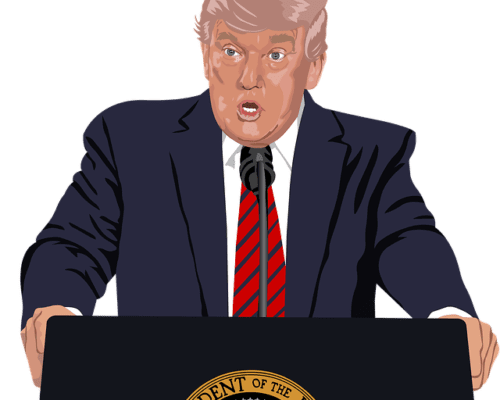Education Hub.
OCTOBER 11, 2024
Recession- proof Portfolios

- From the mid 1800s through 1940, about 50% of months were a recession.
- Since 1945, about 15% of months were a recession (most research firms still use this figure as the unconditional probability of a recession occurring in any given year).
- Only 2% of months in the last 10 years were in recession (perhaps 0 without Covid).
Why should I care about recessions?
Recessions have a massive impact on the economy: they affect asset prices, interest rates, and unemployment – and can even bring about permanent changes to laws and politics. In other words: recessions can and will affect your finances. Understanding what causes a recession and the effects it can have will let you invest better during one.
Inflation can happen for reasons other than fast growth: a big rise in oil prices, perhaps triggered by war or trade disputes, can also drive prices up.
No matter what causes a recession, once one hits all hell breaks loose. Next, we’ll look at what exactly happens during a recession.
What happens during a recession?
Things tend to go pear-shaped. Panic begets panic, and as businesses collapse from a lack of credit or try to save money by laying people off, unemployment starts to rise. That increase in unemployment means people have less to spend, which reduces demand… making businesses struggle even more, which can lead to further unemployment… things get bad. In the last recession, around nine million jobs were lost in America alone.
What happens to share prices?
The plummeting economy spooks investors, who start to flee volatile investments. Share prices will decline, particularly for companies with high debt levels (because investors worry that they might not be able to repay their loans and will shut down).
Some firms might benefit from a recession though, as investors search for safer options: consumer staples are often the last to suffer (because their products are necessities). Other pretty essential industries like utilities and defense also do well – the consistent dividends that companies in those areas pay combined with their stable business models mean they’re more resilient to economic downturns. We call this “recession-proof” companies.
How about bonds?
The riskiest corporate bonds will typically see massive price falls – few investors will be willing to take a gamble in a recession. But government bonds will usually see prices rise (and thus yields fall) – the UK and US governments are extremely unlikely to default on their debt. Not all sovereign bonds are equal though: in mid-2011 some Greek bond yields shot up more than sevenfold as investors became increasingly scared the country was going to collapse.
And other assets?
Recessions tend to slash the value of most currencies: investors don’t want to invest in a country undergoing a recession, so they pull their cash out and look elsewhere. The lower demand for the currency then depresses its value. Most commodity prices also tend to fall – as economies slow, they need fewer materials.
All of these prices might fall before a recession actually starts – if investors think one is coming, they’ll start to sell. Ironically, that could itself trigger a recession…
What does this mean for your investments?
If you think a recession is approaching, you might want to get out of riskier investments. But once hit, a recession can be a great opportunity for buying assets. Warren Buffett is fond of this approach, arguing that a market crash can offer great opportunities for buying shares of good companies at discount prices. When the market rebounds, you might have done quite well for yourself by running into the chaos while everyone else was running away.
That’s if the market does rebound, though. Next, we’ll look at how recoveries come about – and how they don’t.
With the economic world collapsing around them, governments and central banks of shrinking economies come to the rescue to try and rebuild. To end a recession, they have to stimulate spending – and they have a number of tools to achieve this. The first line of defense is normally to slash interest rates. Lowering the cost of borrowing and making saving less productive encourages people to take out loans and start spending – and investing, in an effort to find returns.
But rate cuts might not be enough – if interest rates are already low to begin with, pushing them down to zero might not make much of a difference. In which case, governments might try to boost the economy with fiscal stimulus: borrowing and spending tons of money (on infrastructure projects, for example) to try and kickstart private spending. The thinking is that all the people working on these projects will have more money in their pockets that they’ll spend… in the economy.
That’s not always feasible though. Some countries might be overwhelmed by their level of debt during a recession and go the route of austerity instead: cutting government spending to try and reduce debt. In those cases, central banks might turn to quantitative easing – in which they print money, distribute it to commercial banks, and encourage them to pass that money on to the public through loans in the hope that increased liquidity will stimulate the economy.
What affects a recovery?
The competence of officials is crucial in determining how quick a recovery is, or if one happens at all. Forced to work with imperfect information, it’s not an easy job – economic data is always delayed and you can never know how long a policy will take to impact the economy. Sometimes officials make bad decisions and miss good ones: some economists think a greater increase in the supply of cash could have stopped the last crisis from being as bad as it was.
There’s also a theory that what causes a recession affects how long the subsequent recovery takes. One study found that recessions as a result of financial crises (like bank collapses) are more difficult to bounce back from than recessions caused by overheating or inflation. It’s not entirely clear why that is – but it may be down to the debt everyone ends up with after losing loads when financial institutions collapse.
How can I profit from a recovery?
Stocks tend to do brilliantly during a recovery. You could join the droves of investors searching for the great returns that stocks can offer when interest rates are low – and taking the risks that come with them. That translates into higher demand for stocks with big growth potential – and higher prices when it’s time to sell.
In a complete reversal of what happens during a recession, companies with high debt levels usually do well in a recovery: they’ll benefit from low borrowing costs, allowing them to expand faster. Bonds can also be a good bet – their prices generally rise as interest rates fall (though they typically don’t perform as well as stocks during a recovery period).
All this knowledge is great in theory, but it’s only of use if you can actually put it into practice.
At Vantage Capital, we continuously monitor trends in the global economy as we curate research from leading financial institutions. If you’d like to talk to one of our advisors, please feel free to reach out.






